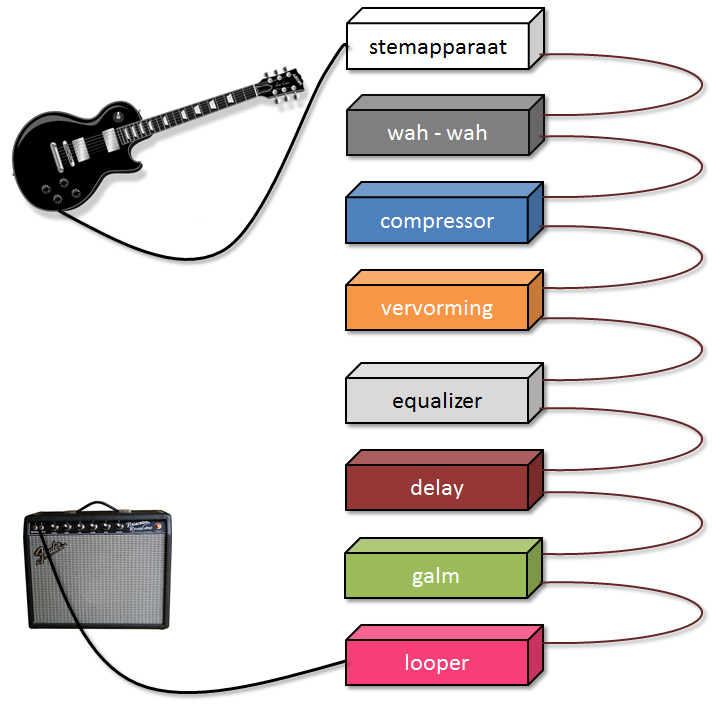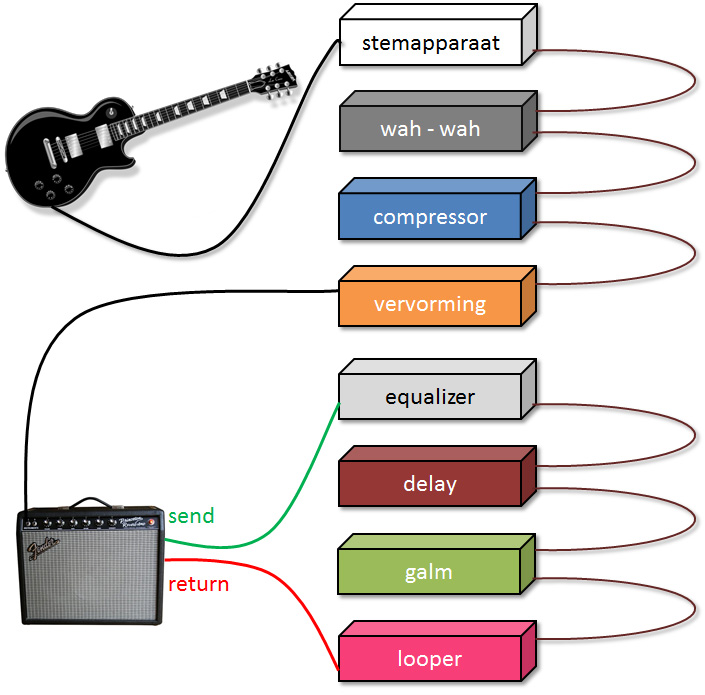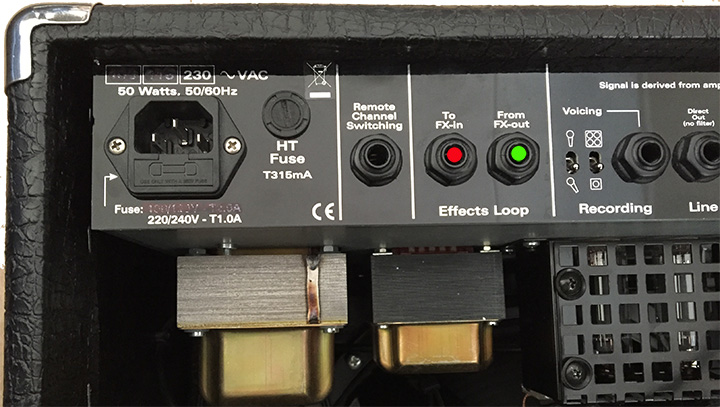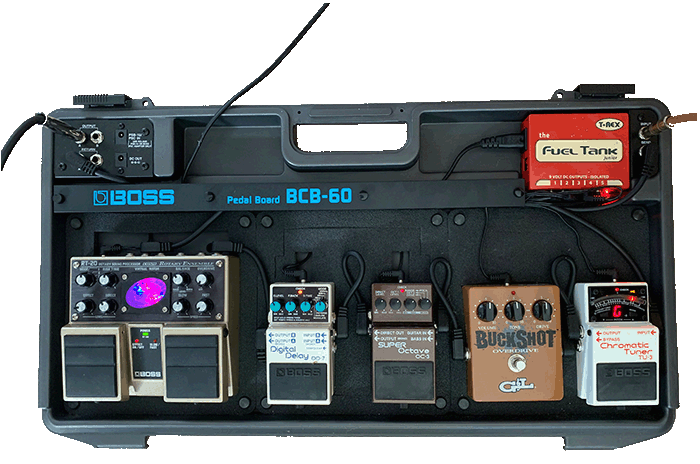Sequence of effects
Because an effect is naturally influenced by the effects in the chain before it, the order is very decisive for the final result. Take for example a reverb that is connected before or after a Wah-Wah. When the reverb is at the front of the range, the Wah-Wah will affect the guitar sound including the reverb. Chances are you think it sounds better when the reverb is added to the Wah effect afterwards. Also consider effects that disturb a bit (noise or hum). When they are at the beginning, any subsequent effects will “unwittingly” edit that disturbance.
Your own ears first determine your preference, but you can use the "advice" below as a guideline. Of course it can be interesting to sometimes experiment with a different order. Keep in mind that effects will not all be on simultaneously and that there may be less influence.

Tuner
Place it at the front of the string to receive an "unprocessed" signal from the guitar. This will make voting easier.
Wah
The Wah can be the first to add "color" to the sound.
Remember that a Wah is a type of tone control that amplifies certain frequency ranges via the foot controller.
Compressor
A compressor can preferably be placed in the front of the series for the deformers.
Scramblers (distortion / fuzz) are usually a bit noisy and a compressor can possibly add to that.
Distortion
Distortion pedals can give some noise or hum and are preferably placed somewhere at the back of the chain.
This also prevents the distortion from being further affected by other effects.
Equalizer
At this point in the sequence you can influence the tone control of the now processed signal.
Delay
Modulation pedals such as flanger, chorus and phaser can now edit it based on the tone it gets from the previous effects.
Reverb
Add the reverb somewhere at the end of the sequence.
This prevents the reverb from being processed by the other effects as well.
Looper
If you have a looper pedal, you will usually want to loop the final sound that was heard from the amplifier. By placing the looper somewhere in the front of the chain, on the other hand, you can turn the underlying effects on and off or change their settings during playback / repeat. The loop then continues while you adjust the effects.
Effect loop on the Amp
The effects described above are all located in front of the guitar amp input. If your amplifier is suitable for it, you can also connect your effects to it. Now it may seem that it doesn't really make a difference, but it certainly isn't. Your amplifier consists of a preamp with a power amplifier coupled behind it. These are usually located in the same box with the speaker integrated in the case of a combo.
Effects placed between the "send" and "return" terminals through the amplifier will be placed between the pre- and power amp sections. Not every effect is in place here and will still be placed in front of the amplifier. An equalizer, delay or reverb are generally good for connecting to the effect loop. It may be that these give a better result.
In practice, it may therefore mean that some of the effects for the amplifier are connected, as shown in the figure above. And that other effects are placed between the preamp and power amplifier via the "send" and "return" terminals. The final picture may then look like this:

* "Stemapparaat" = a Guitar tuner
** Vervorming"= Distortion
*** Galm = Reverb
In the case of my Koch Studiotone, that would mean that pedals could be linked between the "From FX-out" and the "To FX-in" jacks on the back of the cabinet.
Pedal board
Carry pedals easily and safely. Take off the cover, connect the cables and everything is ready within a minute. Punch the guitar on the right and the cord to the amplifier on the left. The cable at the top is the power cable so that no batteries are needed.


